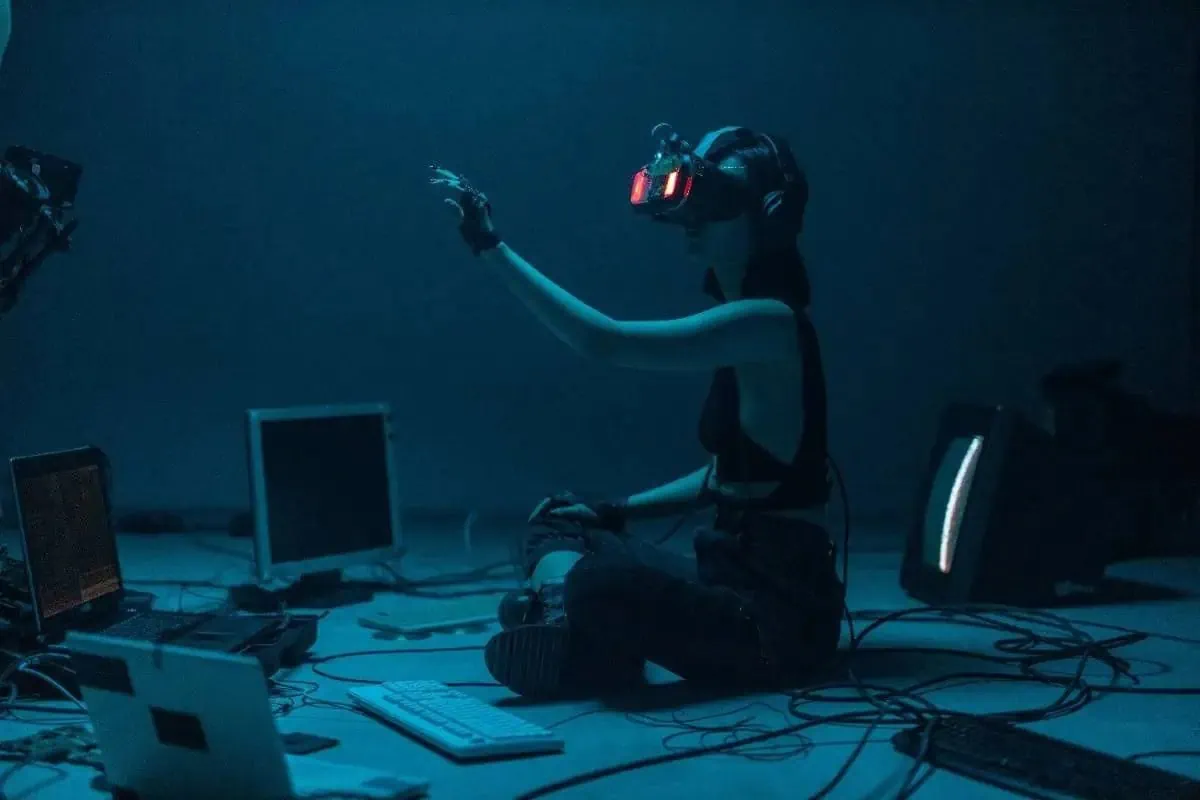Welcome to our guide on Artificial Intelligence (AI) and diversity—a topic at the heart of the modern workplace. As we dive into a future driven by technology, the role of AI in promoting inclusion and fairness is becoming increasingly important. This guide explores how AI shapes the workplace’s diversity landscape, its benefits, and the challenges it poses.
Whether you’re an entry-level job seeker eager to understand the impact of AI on your career journey or an employer looking to leverage AI for more inclusive hiring practices, this guide has something for you. We’ll break down complex concepts into easy-to-understand sections, shedding light on how AI can be a powerful ally in creating a diverse and welcoming work environment.
So, if you’re ready to learn how AI is transforming the world of work and how you can be part of this exciting change, let’s get started. Together, we’ll explore the potential of AI to make the workplace more inclusive for everyone.
The Role of AI in Enhancing Diversity
AI, short for artificial intelligence, is changing how we live and work. It’s everywhere, from how we shop online to the jobs we apply for. But, AI is not just about improving efficiency; it’s also a powerful tool for boosting diversity.
First, let’s talk about digital platforms’ inclusive progress. These platforms use AI to create spaces where everyone has equal opportunities regardless of their background. They’re setting an example of how technology can serve everyone.
How AI Promotes Diversity
- AI helps in fair hiring practices by analyzing job descriptions for biased language that might discourage certain groups from applying.
- It also plays a crucial role in creating personalized experiences for users and employees, respecting their unique backgrounds and needs.
AI isn’t just a tool for the present; it’s paving the way for a more inclusive future. By leveraging AI’s capabilities to promote diversity, companies can create truly welcoming and inclusive environments for all.
Yet, for AI to truly serve the cause of diversity, it must be developed and used thoughtfully. This means constantly checking for biases and ensuring that AI systems are trained on diverse datasets. Only then can AI become a beacon of diversity, shining light on the rich diversity of human experience.
How AI Can Help Detect and Reduce Bias
AI has a unique role in identifying biases that humans might miss. This is crucial because even with the best intentions, bias can sneak into workplaces and systems, impacting diversity.
Tools for Detecting Bias
- AI technologies can review job postings and employee feedback to find language or patterns that could be biased.
- Software driven by AI can analyze hiring trends over time to spot any unconscious biases in candidate selection or promotion.
By catching these biases early, organizations can take steps to correct them. This helps create a fairer, more inclusive work environment where everyone has an equal shot at success. It also puts companies on the path towards becoming more diverse and inclusive, just like the examples set by fashion dream jobs that prioritize inclusivity in the workplace.
The Impact of Bias Detection
Detecting and eliminating bias does more than just create a fair workplace. It:
- It opens up doors for previously overlooked talent, enriching the company culture with diverse perspectives.
- Builds trust among employees and customers, showing that the company values fairness and inclusivity.
Furthermore, using AI to combat bias is an ongoing process. Regular updates and reviews are required to ensure that the AI systems themselves do not develop biases over time. Resources like the information found at IBM’s insights on AI and diversity can provide guidance on maintaining an unbiased AI system.
Making AI a tool for inclusivity enhances diversity and strengthens our digital future’s ethical foundation. As we integrate AI more deeply into our lives, its role in shaping a diverse and inclusive society becomes increasingly significant.
The Importance of Training AI with Diverse Data
Training AI with diverse data is key to making AI and diversity work hand in hand. After all, AI systems learn from the data they’re fed. AI will make more inclusive decisions if this data reflects a wide range of experiences and backgrounds.
Benefits of Diverse Data
- Diverse data helps AI understand and serve a broader audience.
- It prevents AI from making biased decisions based on limited viewpoints.
For example, when AI is trained with data from diverse populations in healthcare, it can provide better, more personalized care solutions. Similarly, AI can further fairness in hiring by equally evaluating candidates from different backgrounds.
Challenges and Solutions
However, gathering diverse datasets is not always easy. Sometimes, the data we have is already biased. So, what do we do? Here’s where the hard work comes in. Companies need to collect and use diverse data intentionally. This might mean reaching out to underrepresented groups or using new methods to collect data.
It’s not just about having diverse data. It’s also about continuously checking and re-checking the data for biases. This ensures that AI systems remain fair over time. Companies can look at successful examples, like those found in marketing jobs, where marketers use diverse data to reach wider audiences effectively.
Training AI with diverse data is not just a technical issue; it’s a commitment to fairness and inclusion. As AI continues to influence our world, ensuring it reflects the diversity of human experience is essential. By doing so, we harness AI’s power to create a more inclusive society.
Personalized Learning: A Step Towards Inclusion
AI’s impact goes beyond hiring and data processing. It plays a huge role in making learning more accessible and personalized. This is a big win for diversity.
Customized Training for Everyone
- AI can tailor training materials to fit different learning styles.
- It can provide language translations, making content accessible to non-native speakers.
Such customization ensures everyone can learn and grow at their own pace, no matter their background or abilities. This not only improves employee skills but also boosts confidence and job satisfaction.
Examples in Action
Many companies are now using AI to design training programs. For instance, in the purchasing-procurement sector, AI is helping employees easily understand complex global supply chains. This tailored training approach ensures that all employees can achieve excellence regardless of their starting point.
Companies investing in AI-powered educational tools show their commitment to inclusion. They recognize the value of diverse perspectives and are ready to support their team’s growth. This commitment often reflects in their success, drawing from a broader talent pool.
Ultimately, personalized learning via AI is not just about upskilling. It’s about making sure everyone has equal opportunities to succeed. Through AI, companies can support a learning culture that values and nurtures diversity.
The Challenges AI Poses to Diversity Efforts
While AI and diversity often work well together, there are hurdles. If not careful, AI can hinder rather than help diversity.
When AI Gets It Wrong
- If trained on biased data, AI can repeat and even strengthen biases.
- AI’s decisions can sometimes be hard to understand, raising concerns about fairness.
For instance, an AI system in hiring might overlook qualified candidates from underrepresented groups. This is counterproductive to diversity efforts. Also, when AI’s reasoning is unclear, ensuring decisions are fair is challenging.
Keeping AI in Check
So, what can be done? There are several steps companies can take:
- Regularly audit AI systems for bias and transparency issues.
- Maintain a balance between AI’s efficiency and human oversight.
By doing so, organizations can leverage AI’s power without compromising on diversity and inclusion. Checking out resources like BCG’s insights on how AI could help or hinder women in the workforce can guide these efforts.
AI has great potential to advance diversity, but only with careful implementation and constant vigilance. Companies that recognize and address the challenges AI poses are better positioned to foster a truly inclusive environment.
AI’s “Black Box”: A Barrier to Transparency
The “black box” nature of AI decisions is a real challenge. It often makes it hard for us to understand how AI reaches its conclusions. This lack of transparency can be a big problem when trying to ensure fairness and inclusion.
Understanding the “Black Box”
- Some AI systems use complex algorithms that even experts find hard to decipher.
- This can make it challenging to identify when or why an AI system might be biased.
For diversity efforts to really work, companies need to know how AI makes its choices. Without this insight, building trust in AI systems within a company and with its clients is tough.
Bridging the Gap
Thankfully, there are ways to tackle this issue:
- Employing more transparent AI models when possible.
- Increasing collaboration between AI developers and diversity experts.
These steps help ensure that everyone can understand and trust AI decisions. Efforts to make AI more transparent often lead to discovering and correcting biases more effectively. This reinforces the trust in AI-based systems and supports a culture of inclusion and diversity.
Dealing with the “black box” of AI is crucial for leveraging AI in the advancement of diversity efforts. Transparency is not just a technical requirement; it’s a cornerstone for creating inclusive AI systems everyone can trust and benefit from.
Why Human Judgment Still Matters
Even with the rise of AI, the human touch remains irreplaceable. When it comes to diversity and inclusion, human judgment plays a crucial role. After all, AI is just a tool, and how we use it counts.
The Balance Between AI and Human Insight
- Humans can spot nuances that AI might miss.
- People bring empathy and understanding to decision-making processes.
For instance, human intuition and emotional intelligence are key in sensitive areas like employee relations or customer service. They ensure decisions are fair, compassionate, and grounded in the complex reality of human interactions.
Combining Strengths for Better Outcomes
So, how do we get the best of both worlds?
- Use AI to handle data-heavy tasks, freeing humans to focus on more nuanced decisions.
- Ensure teams are trained to work effectively with AI and understand its capabilities and limitations.
By blending AI’s power with human empathy and insight, companies can foster a workplace culture that truly values diversity. This approach leads to better decisions and strengthens the commitment to inclusivity. Additionally, looking into examples like those in the role of AI in mitigating bias can offer valuable insights into balancing AI with human judgment.
Human judgment is not just an add-on in the era of AI; it’s a necessary counterpart. AI and human insight pave the way for a more diverse, inclusive, and fair future.
Making AI Work for Diversity: Practical Steps
Proactive measures are essential to harness AI’s potential for advancing diversity. Here’s how organizations can make AI a force for inclusivity.
Key Steps for Success
- Firstly, AI systems should be audited regularly for any signs of bias.
- Next, diversity in the teams developing and overseeing AI should be ensured.
- Then, invest in training AI with as diverse data sets as possible.
Additionally, encouraging open discussions about AI and diversity helps. It creates awareness and fosters a culture that values inclusion. Plus, it’s vital to balance AI’s efficiency with the need for transparency and fairness.
Learning from Others
Looking at organizations that have successfully implemented these strategies can be enlightening. For example, companies featured on digital platforms Inclusive Progress often share their journeys toward more inclusive practices.
While AI offers incredible possibilities for enhancing diversity, it requires careful, thoughtful application. By taking these practical steps, organizations can ensure that their use of AI contributes positively to diversity and inclusion goals.
FAQ’s
How does AI detect bias in hiring?
AI can analyze job descriptions and hiring patterns, looking for language or trends that might favor certain groups over others. This helps in identifying and reducing bias.
Is AI alone enough to ensure diversity?
No, AI is a tool that can support diversity efforts, but it needs to be guided by human judgment and ethical considerations.
Can AI be biased?
AI can perpetuate or even amplify existing biases if trained on biased data. That’s why diverse data sets and regular audits are important.
What can organizations do to make their AI more inclusive?
Organizations can audit their AI systems for bias, ensure diversity among the teams working on AI, and train AI on diverse data sets.
Why is human judgment important in AI decisions?
Humans can understand context, nuance, and ethics in ways AI cannot, making human oversight crucial for fair and compassionate decisions.
How often should AI systems be audited for bias?
Regular audits are essential, though the frequency might vary based on the system’s complexity and its impact on decisions
Conclusion
AI holds immense potential to advance diversity and inclusion. AI can significantly support diversity efforts by detecting biased patterns, tailoring personalized learning, and ensuring decisions are made based on diverse data. However, it’s also clear that AI alone is not the solution. Human insight, empathy, and ethical judgment are irreplaceable in leveraging AI for a truly inclusive future.
For AI and diversity to flourish, organizations must pursue ongoing education, regular audits, and foster an inclusive culture. Every step towards inclusive AI benefits your organization and contributes to a broader societal shift towards equity and understanding.
If you’re passionate about making a difference and sick of those other job search websites, join a community that values diversity, inclusion, and innovation! Join Diversity Employment and upload your resume today! Together, we can shape a future where AI enhances diversity, ensuring that technology works for everyone, not just a select few.




